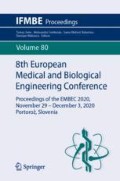Abstract
Instrumented versions of functional geriatric screening tests have been developed to improve clinical precision. Several different instrumented versions of the Sit-to-Stand (iSTS) test have been developed using a range of sensors such as accelerometers and cameras. An instrumented chair equipped with load cells and an ultrasound sensor was developed to detect phases of the STS (Sit to Stand). The chair was designed to be able to detect all the phases of the STS, including when the person was not in contact with the chair. Performance of the iSTS chair was compared between an RGB camera approach, and a data-fusion approach using the load-cell and ultrasound equipped chair. Ten adult subjects were tested performing the 5STS at two self-selected speeds. The accuracy of the load cell equipped chair was 70%, while the RGB camera achieved 76% accuracy. The ultrasound version of the chair and the fusion of the RGB and load cells technique both achieved significantly better accuracy at 86% and 89%, respectively. The new version of the instrumented chair obtained a high degree of accuracy in detecting the different phases of the STS and is suitable to detect STS phases without requiring additional sensors. Future work will test older subjects and aim to develop new parameters based on the phases of the STS as indicators of physical performance.
Access this chapter
Tax calculation will be finalised at checkout
Purchases are for personal use only
References
Csuka, M., McCarty, D.J.: Simple method for measurement of lower-extremity muscle strength. Am. J. Med. 78(1), 77–81 (1985). https://doi.org/10.1016/0002-9343(85)90465-6
Shea, C.A., Ward, R.E., Welch, S.A., Kiely, D.K., Goldstein, R., Bean, J.F.: Inability to perform the repeated chair stand task predicts fall-related injury in older primary care patients. Am. J. Phys. Med. Rhabil. 97(6), 426–432 (2018). https://doi.org/10.1097/phm.0000000000000889
Slaughter, S.E., Wagg, A.S., Jones, C.A., Schopflocher, D., Ickert, C., Bampton, E., Jantz, A., Milke, D., Schalm, C., Lycar, C., Estabrooks, C.A.: Mobility of vulnerable elders study: effect of the sit-to-stand activity on mobility, function, and quality of life. J. Am. Med. Dir. Assoc. 16(2), 138–143 (2015). https://doi.org/10.1016/j.jamda.2014.07.020
van Lummel, R.C., Walgaard, S., Maier, A.B., Ainsworth, E., Beek, P.J., van Dieën, J.H.: The instrumented sit-to-stand test (iSTS) has greater clinical relevance than the manually recorded sit-to-stand test in older adults. PLoS ONE 11(7), e0157968 (2016). https://doi.org/10.1371/journal.pone.0157968
Ejupi, A., Brodie, M., Gschwind, Y.J., Lord, S.R., Zagler, W.L., Delbaere, K.: Kinect-based five-times-sit-to-stand test for clinical and in-home assessment of fall risk in older people. Gerontology 61(1), 118–124 (2016). https://doi.org/10.1159/000381804
Millor, N., Lecumberri, P., Gomez, M., Martinez-Ramirez, A., Rodriguez-Manas, L., Jose Garcia-Garcia, F., Izquierdo, M.: Automatic evaluation of the 30-s chair stand test using inertial/magnetic-based technology in an older prefrail population. IEEE J. Biomed. Health Inform. 17(4), 820–827 (2013). https://doi.org/10.1109/jbhi.2013.2238243
Greene, B.R., Doheny, E.P., Kenny, R.A., Caulfield, B.: Classification of frailty and falls history using a combination of sensor-based mobility assessments. Physiol. Meas. 35, 2053–2066 (2014). https://doi.org/10.1088/0967-3334/35/10/2053
Zhang, W., Regterschot, G.R.H., Geraedts, H., Baldus, H., Zijlstra, W.: Chair rise peak power in daily life measured with a pendant sensor associates with mobility, limitation in activities, and frailty in old people. IEEE J. Biomed. Health Inform. 21(1), 211–217 (2017)
Millington, P.J., Myklebust, B.M., Shambes, G.M.: Biomechanical analysis of the sit-to-stand motion in elderly persons. Arch. Phys. Med. Rehabil. 73(7), 609–617 (1992). 10.5555/uri:pii:000399939290124F
Schenkman, M., Berger, R.A., Riley, P.O., Mann, R.W., Hodge, W.A.: Whole-body movements during rising to standing from sitting. Phys. Ther. 70(10), 638–648 (1990). https://doi.org/10.1093/ptj/70.10.638
Van Lummel, R.C., Evers, J., Niessen, M., Beek, P.J., Van Dieën, J.H.: Older adults with weaker muscle strength stand up from a sitting position with more dynamic trunk use. Sensors 18(4), 1235 (2018)
Hirschfeld, H., Thorsteinsdottir, M., Olsson, E.: Coordinated ground forces exerted by buttocks and feet are adequately programmed for weight transfer during sit-to-stand. J. Neurophysiol. 82(6), 3021–3029 (1999). https://doi.org/10.1152/jn.1999.82.6.3021
Van Lummel, R.C., Ainsworth, E., Lindemann, U., Zijlstra, W., Chiari, L., Van Campen, P., Hausdorff, J.M.: Automated approach for quantifying the repeated sit-to-stand using one body fixed sensor in young and older adults. Gait Posture 38(1), 153–156 (2013). https://doi.org/10.1016/j.gaitpost.2012.10.008
Shukla, B.K., Jain, H., Vijay, V., Yadav, S.Y., Mathur, A., Hewson, D.J.: A comparison of four approaches to evaluate the sit-to-stand movement. IEEE Trans. Neural Syst. Rehabil. Eng. 28(6), 1317–1324 (2020). https://doi.org/10.1109/TNSRE.2020.2987357
Shukla, B.K., Jain, H., Vijay, V., Yadav, S., Hewson, D.: A fusion-based approach to identify the phases of the sit-to-stand test in older people. In: 2020 National Conference on Communications (NCC), pp. 1–6. IEEE, 21 February 2020
Kelley, K.: The effects of nonnormal distributions on confidence intervals around the standardized mean difference: bootstrap and parametric confidence intervals. Educ. Psychol. Meas. 65(1), 51–69 (2005). https://doi.org/10.1177/0013164404264850
Acknowledgement
This research was supported by the (Indian Council for Medical Research (ICMR), grant number 54/9/GER/2019-NCD-II.
Author information
Authors and Affiliations
Corresponding author
Editor information
Editors and Affiliations
Rights and permissions
Copyright information
© 2021 Springer Nature Switzerland AG
About this paper
Cite this paper
Shukla, B.K., Jain, H., Singh, S., Vijay, V., Yadav, S.K., Hewson, D.J. (2021). Development of an Instrumented Chair to Identify the Phases of the Sit-to-Stand Movement. In: Jarm, T., Cvetkoska, A., Mahnič-Kalamiza, S., Miklavcic, D. (eds) 8th European Medical and Biological Engineering Conference. EMBEC 2020. IFMBE Proceedings, vol 80. Springer, Cham. https://doi.org/10.1007/978-3-030-64610-3_44
Download citation
DOI: https://doi.org/10.1007/978-3-030-64610-3_44
Published:
Publisher Name: Springer, Cham
Print ISBN: 978-3-030-64609-7
Online ISBN: 978-3-030-64610-3
eBook Packages: EngineeringEngineering (R0)

